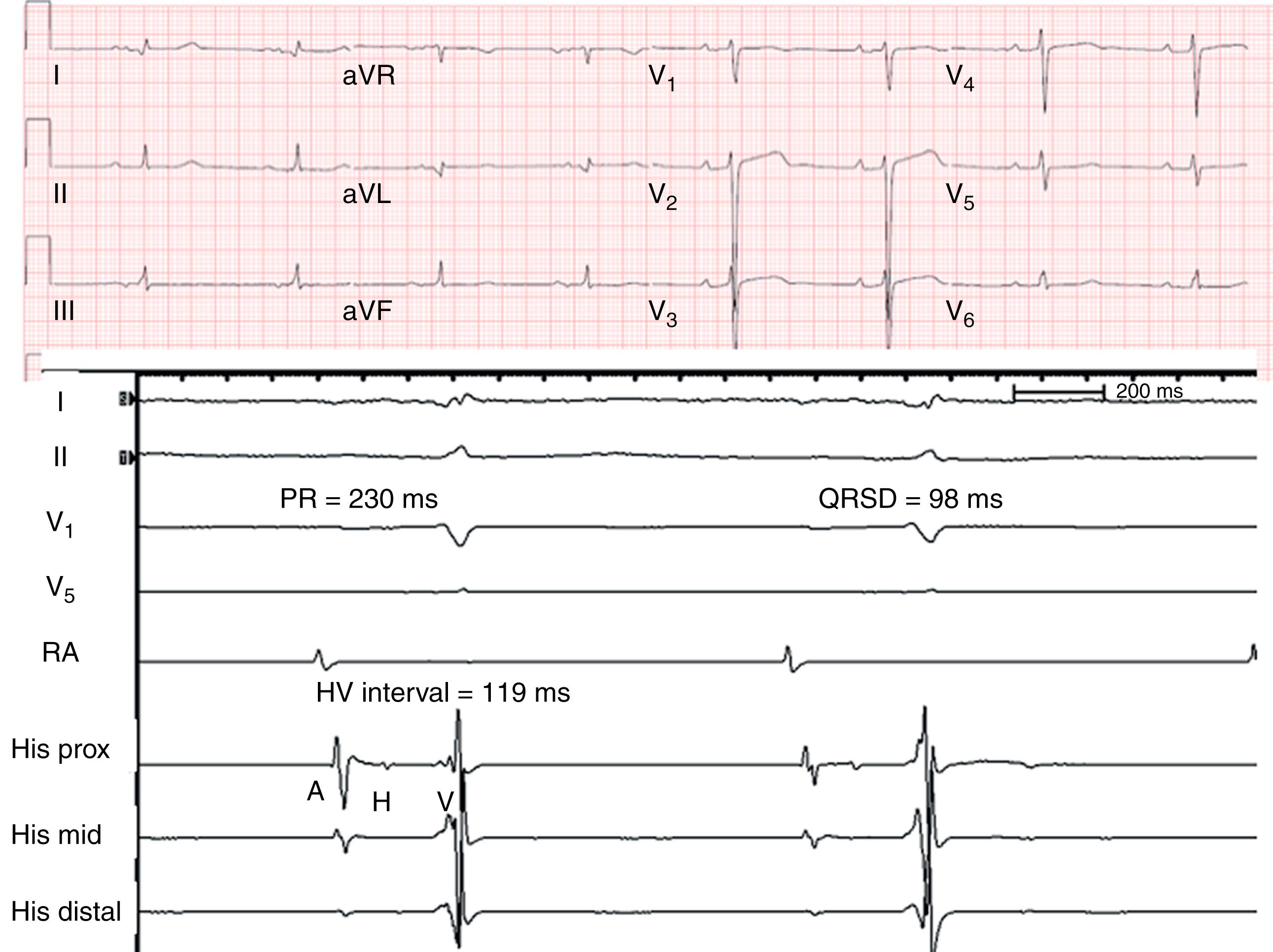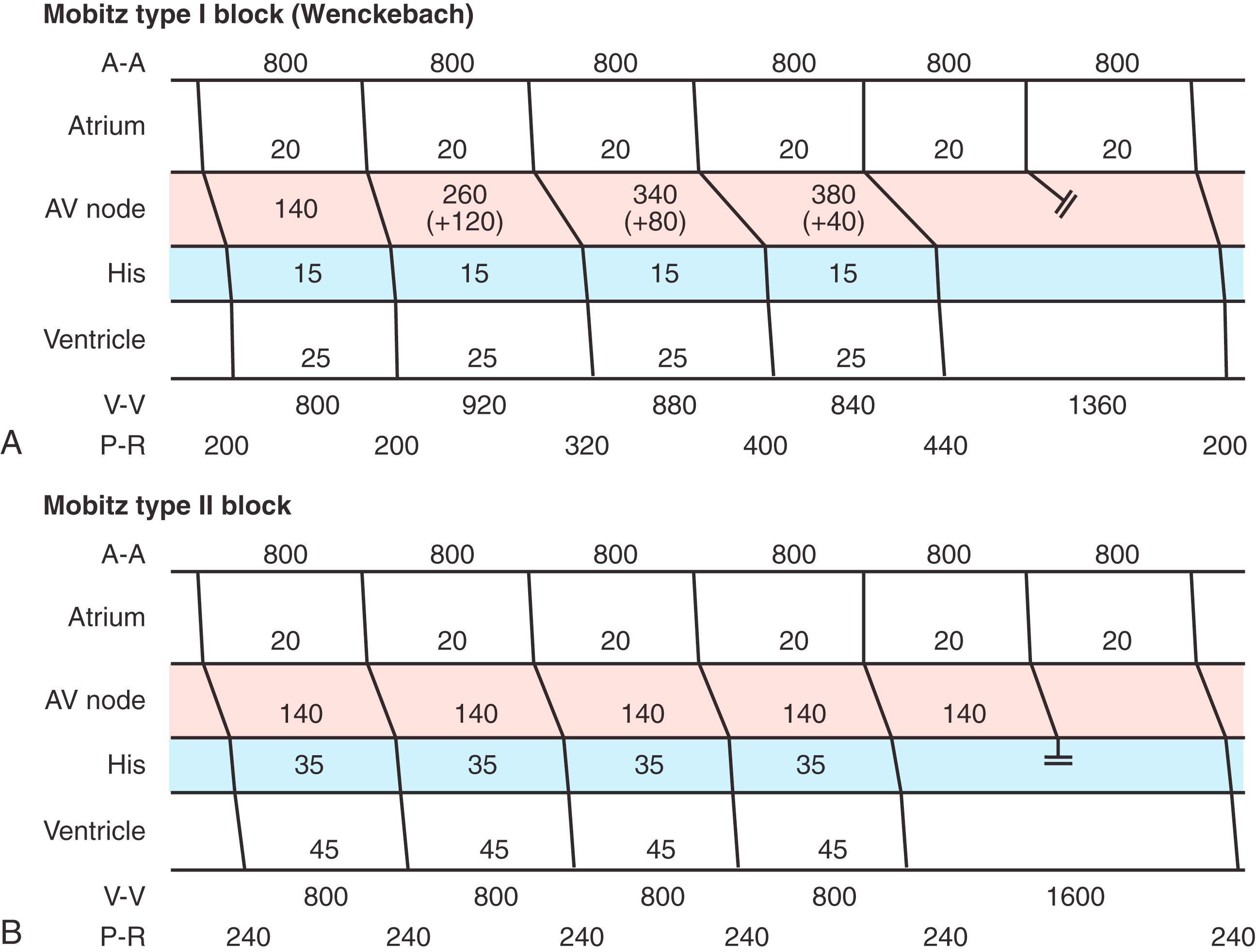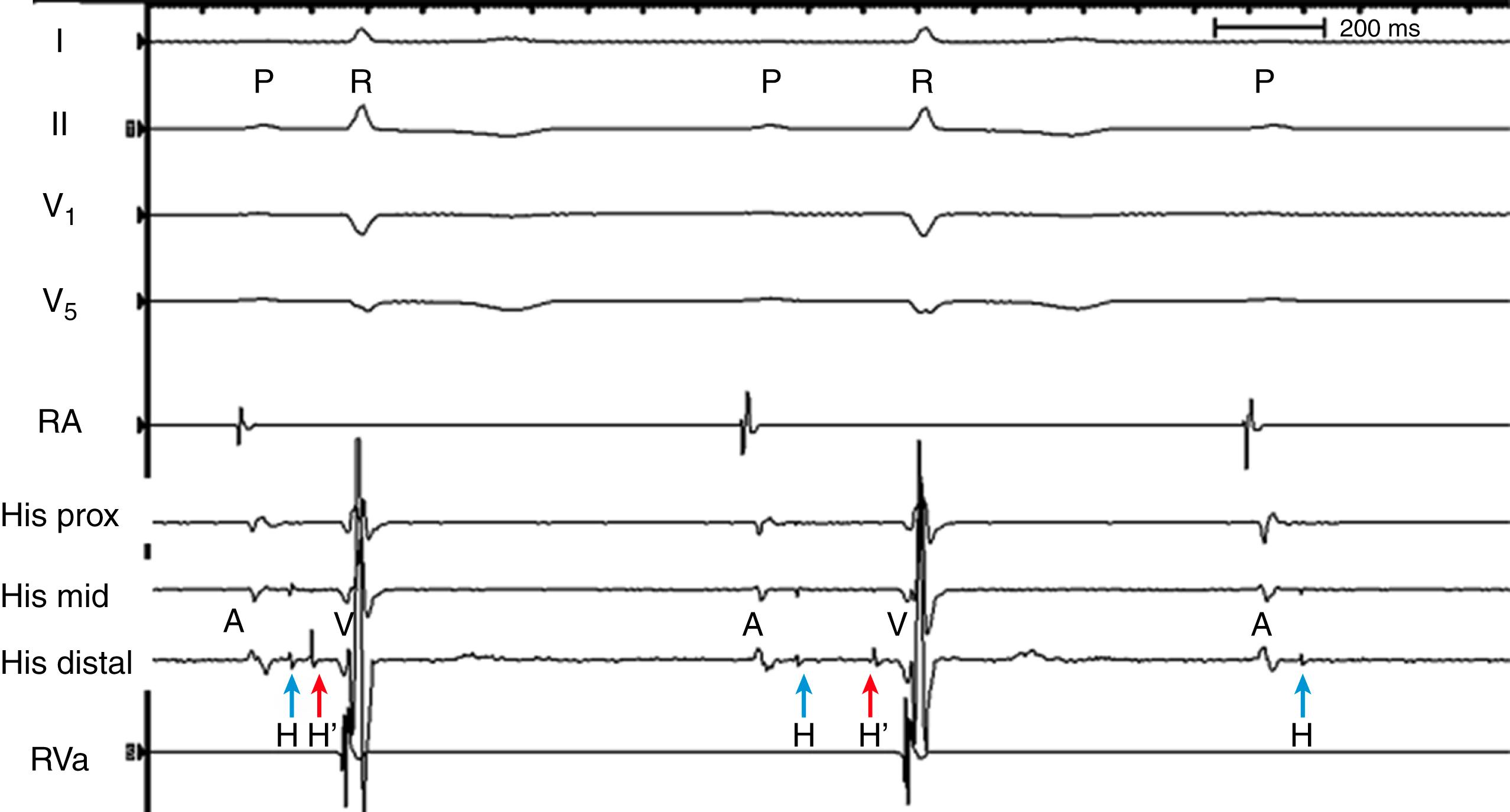Physical Address
304 North Cardinal St.
Dorchester Center, MA 02124
The atrioventricular (AV) node is the only connection between the atria and ventricles in the normal heart. It modulates the AV conduction to provide enough delay between atrial and ventricular conduction to allow for ventricular filling. In addition, its decremental conduction properties limit ventricular rates during atrial arrhythmias, such as atrial flutter (AFL) and atrial fibrillation (AF). The AV node also has the capability to serve as a subsidiary pacemaker.
AV conduction is dependent on distinct types of myocardial tissue and includes atrial inputs into the AV node, the various components of the AV node, and the His-Purkinje conduction system. Disorders of AV conduction may be because of defects in impulse transmission at any of these levels with varying prognostic and therapeutic implications. In general, conduction disturbances above the His bundle are seldom life threatening, and the presence of symptoms is the predominant driver for therapeutic intervention with cardiac pacing. Intermittent or persistent conduction block at or below the His bundle has graver consequences and generally warrants permanent pacing.
AV block may be reversible, and the recognition of temporary causes of AV block is critical to avoid long-term commitment to cardiac pacing. In one-fourth of patients who present with heart block before the age of 50 years, genetic or inflammatory conditions may be present. It is important to detect associated cardiomyopathy and risk for sudden cardiac death because of tachyarrhythmias that might warrant the consideration of additional therapies, such as the use of an implantable cardioverter-defibrillator (ICD).
On the basis of electrocardiogram (ECG) characteristics, AV block is classified as first-, second-, and third-degree AV block. Anatomically, block can occur at various levels in the AV conduction system: above the His bundle (supra-His), within the His bundle (intra-His), and below the His bundle within the bundle branches (infra-His).
First-degree AV block is defined as abnormal prolongation of the PR interval to greater than 200 ms and is commonly because of a delay in the AV node irrespective of the QRS width. Intracardiac recordings show an AH interval greater than 130 ms in the presence of a normal HV interval. Occasionally, a transition of AV nodal conduction from a fast to slow AV nodal pathway can manifest as first-degree AV block. Less commonly, first-degree AV block can also occur at or below the His bundle; in such cases, the HV interval is prolonged beyond 55 ms (or 65 ms in the presence of proximal left bundle branch block [LBBB]). First-degree AV block with a relatively narrow QRS because of His–Purkinje conduction delay is not an uncommon finding in cardiac amyloidosis, where diffuse amyloid infiltration into the myocardium can delay conduction equally in both right and left bundles ( Fig. 106.1 ).

Type I second-degree heart block on ECG refers to progressive PR prolongation before a nonconducted beat and a shorter PR interval for the next conducted beat ( Fig. 106.2 ). This is the classical Wenckebach-type AV block, usually in conjunction with narrow QRS complexes, implying a more proximal level of block, usually in the AV node. Less commonly, Wenckebach-type AV block can also occur in a diseased His–Purkinje system. Intra-His Wenckebach phenomenon is manifested as a prolonged His electrogram (>30 ms) with splitting and progressive prolongation of the split before block ( Fig. 106.3 ). Unlike Wenckebach block at the AV nodal level, intra-His AV block tends to worsen with exercise or with atropine. Rarely, Wenckebach block can be demonstrated below the His bundle, with progressive delay in the HV interval and with block and resumption of conduction with the shorter HV interval.


Type II second-degree heart block (Mobitz type II block) is characterized by fixed PR intervals before and after blocked beats (see Fig. 106.2 ). It is usually associated with a wider QRS complex, indicating distal levels of block in the conduction system with progression to complete AV block. Type II block cannot be diagnosed if the PR interval after a pause is shorter than the PR immediately preceding the nonconducted P wave. The PP interval remains constant, and the pause incorporating the nonconducted P wave is twice the PP interval. True Mobitz type II block is rare with normal QRS complexes, and atypical Wenckebach should be considered. This is particularly true during sleep when sinus slowing precedes nonconducted P waves because of vagotonia. When Mobitz type II block occurs in conjunction with a narrow QRS, the block is usually within the His bundle.
AV conduction in a 2:1 pattern can be because of proximal (supra-His) or distal block (infranodal). Differentiation between proximal and distal levels of block can be difficult. In general, a narrow QRS implies block at the AV nodal level, whereas a wide QRS makes it more likely to be below the AV node. Fixed 2:1 AV block with a constant normal or relatively short PR interval suggests infranodal block, whereas a prolonged PR (>300 ms) or preceding Wenckebach-type AV conduction implies block at the level of the AV node. Atropine and exercise tend to improve AV nodal block. In the setting of AF or AFL, a prolonged pause (e.g., greater than 5 seconds) is often because of advanced second-degree AV block.
Third-degree AV block is defined as the complete absence of AV conduction, with P waves dissociated from the QRS and typically faster than the ventricular rate. In the case of AF, complete AV block is manifested as a regularized slow ventricular rate.
Become a Clinical Tree membership for Full access and enjoy Unlimited articles
If you are a member. Log in here